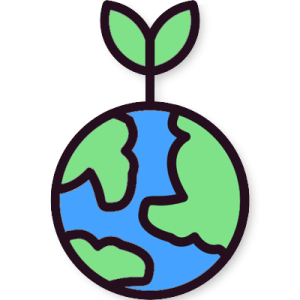Conservation
Energy generation and speciation
How do different forms of energy production influence changes in species?

Overview
Using criteria and information about various types of energy, students rank sources of energy—solar, wind, hydro, and fossil fuels—according to how much they affect or contribute to speciation.
Instructions
What you'll need
- "Human actions and speciation" worksheet
- "Rating the impacts of energy projects on speciation" worksheet
- "Energy and speciation" handouts:
- "Energy and speciation: Fossil fuels"
- "Energy and speciation: Hydroelectric dams"
- "Energy and speciation: Solar farms"
- "Energy and speciation: Wind farms"
- Organize your students into pairs and provide each group with a copy of the "Human actions and speciation" worksheet. Review the concept of speciation with your students, and ask groups to use the ranking ladder at the bottom of the worksheet to rank the sources of energy—solar, wind, hydro, and fossil fuels—according to how much they affect or contribute to speciation.
- Invite groups to share their decisions and thinking with the class. As groups share, use their ideas to co-develop or present the criteria for ranking the effects and contributions to speciation:
- Breadth: The energy project leads to multiple changes in an ecosystem
- Depth: The energy project leads to changes extending beyond the immediate environment
- Duration: The effects of the energy project are prolonged, and last long enough to allow sub-populations to evolve independently
- Briefly explain that the challenge of this activity is to determine the extent to which various forms of energy impact or contribute to speciation.
- Assign one energy source to each group, and provide each group with the related "Energy and speciation" handout and a copy of the "Rating the impacts of energy projects on speciation" worksheet. Prompt students to assess how much their assigned energy source changes the surrounding ecosystem. Guide them to shade in the scale for each criterion, and to note any evidence that supports their ratings.
- After each group has assessed the impacts of their assigned energy source, invite each group to present their ratings to the class.
- Guide the class in discussing the ratings for each of the energy forms, and encourage groups to note ratings and related evidence for each type of energy.
- Conclude the activity by inviting groups to revisit their initial ratings. Encourage groups to reflect on how their initial ranking compares to their final ranking, and to add to or revise their ranking and supporting evidence based on their new learning.
Modify or extend this activity
Extension
- Ask each group to rank each type of energy.
- Invite students to offer suggestions for mitigations that might reduce the impacts of each type of energy.
- Invite groups to find examples of speciation from local or Canadian research.
- Visit a local sustainable energy site to examine impacts on species
Modification
- Invite groups to suggest literacy strategies for reading and summarizing the information in the briefing sheets.
Curriculum Fit
Life Sciences 11
Big idea
- Evolution occurs at the population level
Content
- Levels of organization
- Macroevolution:
- Speciation
- Processes of macroevolution
- Evidence for macroevolution
Curricular competencies
Questioning and predicting
- Demonstrate a sustained intellectual curiosity about a scientific topic or problem of personal, local, or global interest
- Formulate multiple hypothesis and predict multiple outcomes
- Processing and analyzing data and information
- Experience and interpret the local environment
- Use knowledge of scientific concepts to draw conclusions that are consistent with evidence
- Analyze cause-and-effect relationships
Evaluating
- Consider the changes in knowledge over time as tools and technologies have developed
- Consider social, ethical, and environmental implications of the findings from their own and others’ investigations
- Assess risks in the context of personal safety and social responsibility
Applying and innovating
- Contribute to care for self, others, community, and world through individual or collaborative approaches
- Contribute to finding solutions to problems at a local and/or global level through inquiry
- Consider the role of scientists in innovation
Communicating
- Communicate scientific ideas and information, and perhaps a suggested course of action, for a specific purpose and audience, constructing evidence-based arguments and using appropriate scientific language, conventions, and representations
Assessments
Throughout the activity, consider how well students:
- Apply their understanding of the concepts of speciation, geographic isolation, and genetic drift
- Justify their decisions by using evidence to support their ratings of each type of energy








